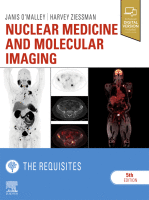Physical Address
304 North Cardinal St.
Dorchester Center, MA 02124

You’re Reading a Preview Become a Clinical Tree membership for Full access and enjoy Unlimited articles Become membership If you are a member. Log in here

You’re Reading a Preview Become a Clinical Tree membership for Full access and enjoy Unlimited articles Become membership If you are a member. Log in here

This chapter reinforces concepts presented in this textbook. Students of medicine gather pearls of wisdom from their mentors that may not fit well into a didactic treatment of a subject but are valuable in day-to-day practice. We all learn to…

A number of noninvasive cardiac diagnostic imaging studies are available to the cardiologist, which include echocardiography, computed tomography (CT), CT angiography, and magnetic resonance imaging. The continuing value of cardiac nuclear scintigraphic studies is that they are noninvasive, contrast media…

Infection imaging has long been an important indication for scintigraphy. Gallium-67 citrate (Ga-67) was the first infection-seeking radiopharmaceutical used clinically. It is still in use today, however, in a much more limited role than in the past. For decades now,…

Molecular imaging examinations using positron emission tomography (PET) and single-photon emission computed tomography (SPECT) are frequently used in the brain because they can complement the anatomical information from magnetic resonance (MR) imaging and computed tomography (CT). By examining cellular function,…

This chapter reviews tumor scintigraphy using radiopharmaceuticals other than F-18 fluorodeoxyglucose (FDG), as well as therapeutic radiopharmaceuticals for specific malignancies ( Box 13.1 ). Theranostics is a topic of increasing importance as it relates to nuclear oncology. The term refers…

Background For decades, positron emission tomography (PET) imaging was largely limited to use in research. The development of dedicated PET cameras, the widespread expansion of cyclotron production facilities, and the approval of new radiopharmaceuticals have all contributed to the dramatic…

Over the years, radiopharmaceuticals and scintigraphic techniques have been developed to assess different aspects of renal function. Using a variety of radiopharmaceuticals, these techniques can answer clinical questions not possible with ultrasound, computed tomography (CT), or magnetic resonance imaging (MRI).…

The use of a radionuclide to measure gastric transit was first described in 1966. Radionuclide gastric emptying scintigraphy has long been the standard methodology for measuring gastric transit. In this section, the recommended standardized gastric emptying protocol is described in…